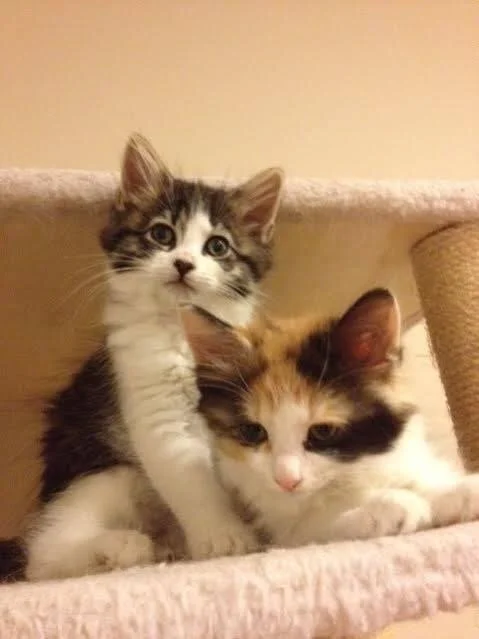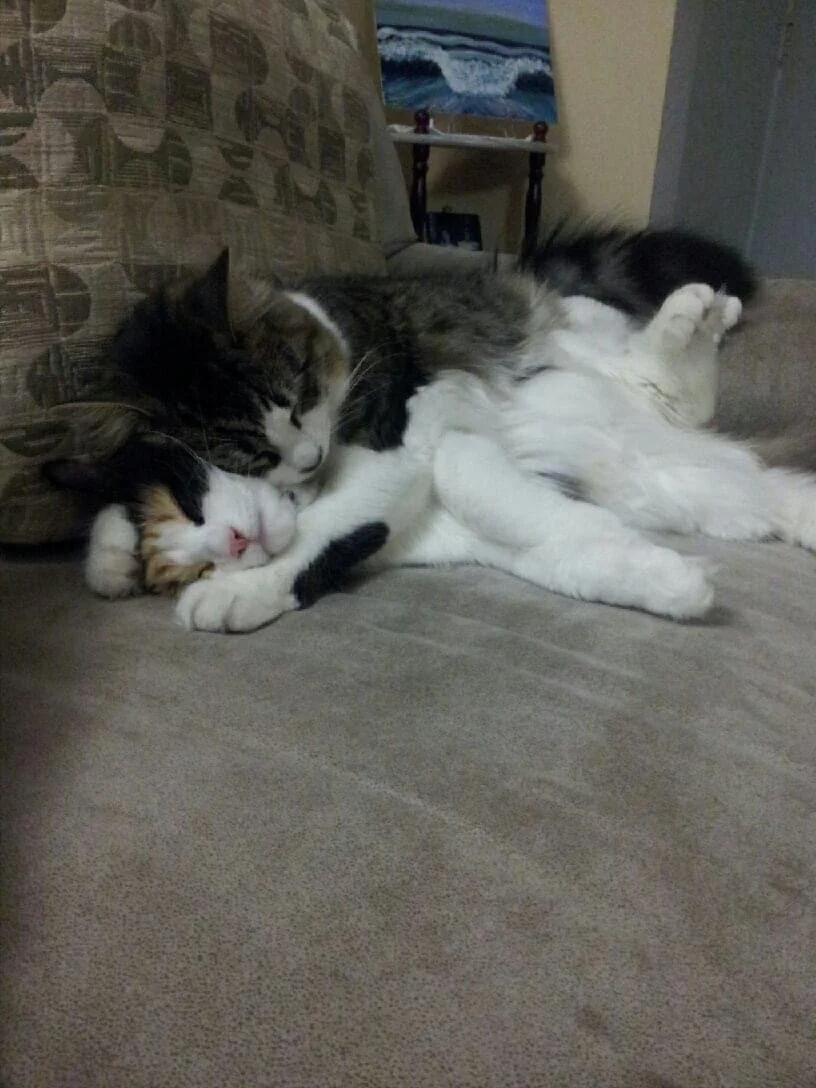Consumer Guilt: Pets
It’s a well known fact pets provide stress relief, companionship, and in some cases, health benefits. I must have intuitively known this when I was a little girl, because with undiagnosed ADHD and depression, I had always craved the presence of animals in a way that my parents couldn’t comprehend. Fittingly, I adopted my cats, Pippin and Merry (pictured below) in response to a particularly bad depressive episode. I was beyond belief driving home with them in the backseat. However, I was always actively conscious of my carbon footprint in the world, and the more I shopped for cat food, toys, and other items, the more I felt a rising panic that I was never going to reach my goal of eco-friendliness. Every item I bought was either plastic, or packaged in single-use plastic or metal. Just picture feeding your pet 2-3 cans of food per day. Now double it. As they got older, about 80%c of my waste came from feeding my cats. I started to feel helpless. I was already having trouble managing my guilt around my profession in consumer product design - my livelihood at the time - and the waste it was contributing to the world.
First day home: Saturday, October 26th, 2013. It was my first time having pets, other than the two betta fish, Firedragon and Dæmon (twins are better), that I had in my freshman year college dorm in a fruitless protest of the school’s no-pet-policy.
I came to the following conclusion: having pets is not sustainable. But not having pets, for me, is simply not an option. So I should just give up, right? I should give in to the plastic-filled, single-use item world of pet products, right? Wrong! Eco-anxiety is hard to ignore, so I leaned into it. I interrogated the question:
How do I make a more sustainable life as a pet caretaker?
I never meant to get two cats, but they are sisters and as a lifelong sister myself, I couldn’t stand the thought of separating them!
In my research, I found some options that I am excited to share and implement into my own life:
Adopt from a shelter: There are millions of pets who don’t get adopted in time, and face euthanasia. By adopting from a shelter, you free up resources (food, toys, healthcare) for another animal in need.
Food: Cats are notoriously picky eaters. If they can’t get used to the food, recycle it! Donate it to some pet shelters, who are always in need of more food.
DIY dog and cat treats - there are tons of recipes just a Google search away.
Buy raw meat. If you have cats, this is an easy one. Cats are obligate carnivores, and their bodies are designed to process raw meat. Just remember to check with your vet before feeding your pet anything new.
Toys: What of your junk would make a good toy? I find that my cats almost only play with old packaging or bits of cardboard. Our furry friends are easy to please.
Feces: Even if you use biodegradable bags, landfills aren’t actually conducive to the breakdown of those bags. Perhaps you can try to compost it, just as long as you aren’t using it to fertilize edible plants. You can also flush it down the toilet.
If you’re worried about your impact on the environment, it’s important to remember that even small steps will make a huge impact! You may not be able to control everything, but you can choose the things that make the most sense for you and fit into your lifestyle. I hope that these tips can inspire you to make some changes if you have pets, or at least quell some of your eco-anxiety, if that is something you are struggling with.
by Tanushree

